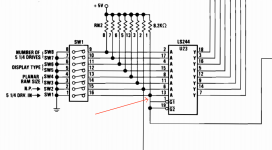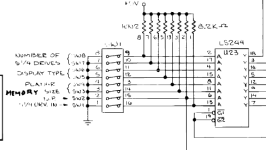I have saved some high resolution photos of the 5150 mainboard where I could check the resistor values which were missing in the schematic, such as some of the 27 ohms ones. Though those values, according to resistor function, are relatively easy to estimate regardless, just like the 4,7 ohm value which was funny to see.
The series resistors can probably be left out, I will leave the footprints in the PCB just in case there is any problem with those signals, I can check them on a scope to see what happens to the signals.
R13 on the CLK88 signal may be useful to have though. I included some 33 ohms resistors on the CLK outputs of the 8284 on my turbo XT. This also makes me consider to experiment with these to see what values result in the best signal shapes.
I will probably include some extra capacitors at the end of the ISA slots to dampen any open end reflections and crosstalk if any appears to be relatively high. One example of a potential cause of trouble is the RESETDRV on the ISA bus which is active high and thus sensitive to noise. For example UART chips don't like any noise on the RESET inputs.
I will crosscheck everything with the XT designs just to spot the changes, and consider which I should also include.
Thanks for pointing out about the resistors which warns me to look at these more carefully.
I noticed on the 5150 photos that there are very few bypass capacitors as well, which I will of course include.
Possibly they are not really needed but it's just general design practice today, at least one I am keeping myself.
Kind regards,
Rodney


